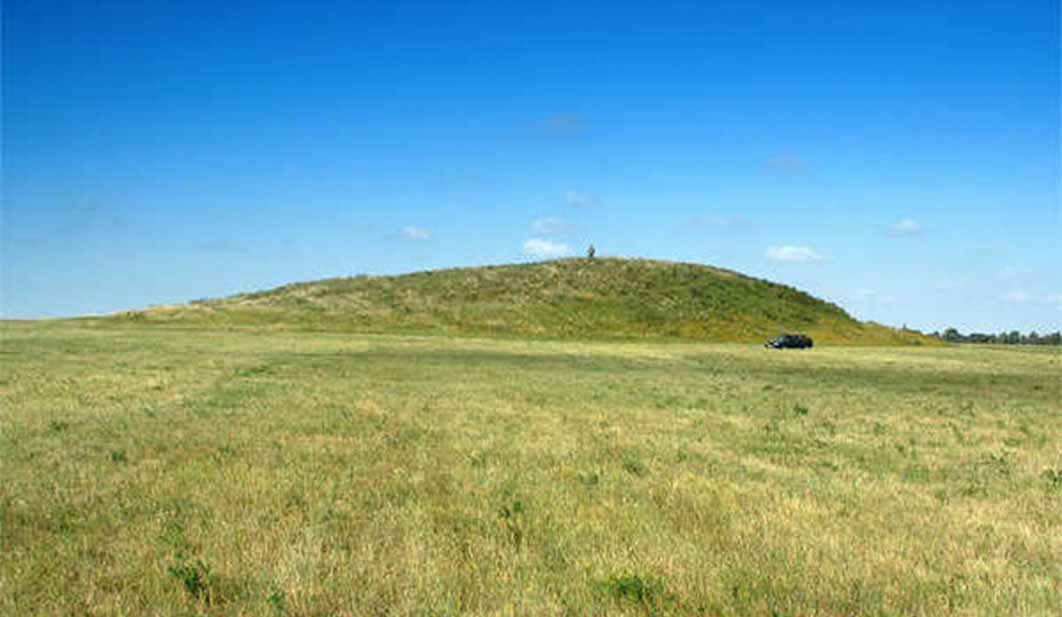
The Kurgan Hypothesis – Right Idea, Wrong Continent
In 1956, a hypothesis was proposed by UCLA archaeology and anthropology professor Marija Gimbutas. Her proposal, which was in part based on prior work by Otto Schrader (1883) and V. Gordon Childe (1926), came to be known as “the Kurgan hypothesis”, and it stated that the Proto-Indo-European culture could be tracked backed to an origin in the geographical region roughly between the Black Sea and the Caspian Sea.
- Indo-European Languages Like English And Sanskrit Had A Common Ancestor 8,100 Years Ago!
- How A Handful of Yamnaya Culture Nomads Became the Fathers of Europe
Linguistic Correlations: Unveiling the Kurgan Hypothesis
The theory was supported by two key lines of cultural evidence. The first line of evidence focused on so called “kurgans,” which were a type of earthen mound, functioning as burial chambers. The locations of known kurgan sites formed a recognizable cultural pattern across a vast swath of Europe and Asia. This widespread cultural artifact indicated a prevalence of cultural influence across a geographically diverse area. Notably, the excavation of said mounds yielded a wealth of datable material which enabled archaeologists to pin the mounds to a specific period, around six to eight thousand years ago. According to most prevalent archaeological timelines, this date precedes other megalithic constructions or advanced societies, thus the hypothesis has had a significant impact on Indo-European studies.
- First Nation K’ómoks Advanced Fishing Traps Revealed in British Columbia
- Archaeologists Have Dates Wrong for North American Indigenous History

Kurgan of Sarmatia from the 4th century BC., in Filipovka, south of the Urals, Russia. This kurgan was excavated under the direction of the Institute of Archaeology of the Russian Academy of Sciences, by Professor L. Yablonsky, in the summer of 2006. It was the first kurgan completely destroyed and reconstructed in its original appearance. (Public Domain)
The second line of evidence was built on linguistic evidence. The Kurgan hypothesis postulates that the people of this early Kurgan culture in the steppes north of the Black Sea were quite possibly the earliest speakers of a proposed mother language – “the Proto-Indo-European language (PIE),” which went on to spread across Europe and the Indian subcontinent, eventually evolving into the Romance, Hellenic, Germanic, Celtic, Balto-Slavic, Indo-Iranian, and Armenian language groups.
Linguists had already been studying the numerous lexical and morphological similarities between many of these language groups, and a goal of identifying a presumed “mother language” had been a longstanding holy grail of linguistics. As far back as 1653, the existence of such a language had been proposed by well-travelled scholars who noticed linguistic similarities throughout their journeys in Asia and Europe. The idea was fleshed out by many scholars during the 19th century and backed up by the development of many sound theories and patterns such as Grimm’s law, Verner’s law, and others. By the early twentieth century, well-defined descriptions of PIE had been put in place which have stood the test of time and are still accepted today.
Seeking Precision: The Quest for a Specific Proto-Indo-European Homeland
Although the language was known to exist, tracing its roots in time and place proved much more difficult. Prior to Gimbutas’s Kurgan theory, much effort had gone into attempts to identify the Proto-Indo-European homeland, but these earlier efforts had tended to be speculative and lacking in physical evidence – a problem that Gimbutas solved by linking the physical kurgan evidence to the etymological evidence. The problem remained though, that kurgans were distributed geographically over a huge area. A more exact location was desired but remained elusive.
On the one hand, linguists had been identifying hundreds of words that were obviously related to one another across languages. On the other hand, unlike earthen mounds, words themselves tend to be difficult to tie to a specific location. There were some words that stood out though; words that appeared in the Proto-Indo-European lexicon, but that also implied geographic limitations. Such words tended to be tied to physical botanical or zoological species with specific known ranges, such as animals like “bear” and “seal,” and plants including “oak.” Conversely, the Proto-Indo-European did not include words for “palm tree” or “lion.” The inclusion of bears and seals and the conspicuous lack of other animals, like lions or elephants began to indicate a climatic pattern. It soon became apparent that the original PIE homeland must have been somewhere in a temperate climate, within the range of the named species. Notably, the PIE also included “snow.” The geographic location of the PIE homeland was somewhere with bears, oak trees, and snow.
Another of these more geographically specific words was “lox.” Anyone who has visited New York City can tell you that lox is a favorite bagel topping consisting of smoked salmon. It is easy to trace the etymology of lox into English from the German word ‘lachs,’ (meaning “salmon”), brought to the new world by immigrants. Many of the nineteenth century linguists were fluent in German and ‘lachs’ was among one of the many words on their lists with continent-spanning similarities. The etymological similarities of lox were well attested across the Asian and European language groups.




